DATA-DRIVEN WAR LABORATORY: WHAT WE HAVE LEARNED FROM THE RUSSIA-UKRAINE WAR

In modern combat environments, the new realities faced necessitate that the defense industry continually develops innovative solutions. We are witnessing an increasing centrality of data-driven approaches in this transformation. The integration of technologies such as big data, artificial intelligence, autonomous systems, ELINT/SIGINT, and the Internet of Things (IoT) into military capabilities ensures more effective and accurate decision-making.
The global defense industry is positioning big data technologies as a primary component rather than a supplementary one in intelligence, surveillance, and reconnaissance (ISR) data.
Military big data infrastructures supported by artificial intelligence and machine learning algorithms enable the detection of threats and the generation of predictive insights for various attacks. This provides significant support for operational decision-making.
Autonomous systems primarily reduce the need for direct human intervention on the battlefield, which is the most valuable element of combat. On the other hand, they perform critical tasks such as target detection, analysis, and destruction with high performance and efficiency.
ELINT/SIGINT (electronic intelligence and signal intelligence) provides critical information by detecting the communication and radar signals of target elements. This offers a valuable advantage in predicting and countering the adversary’s movements and strategies in advance.
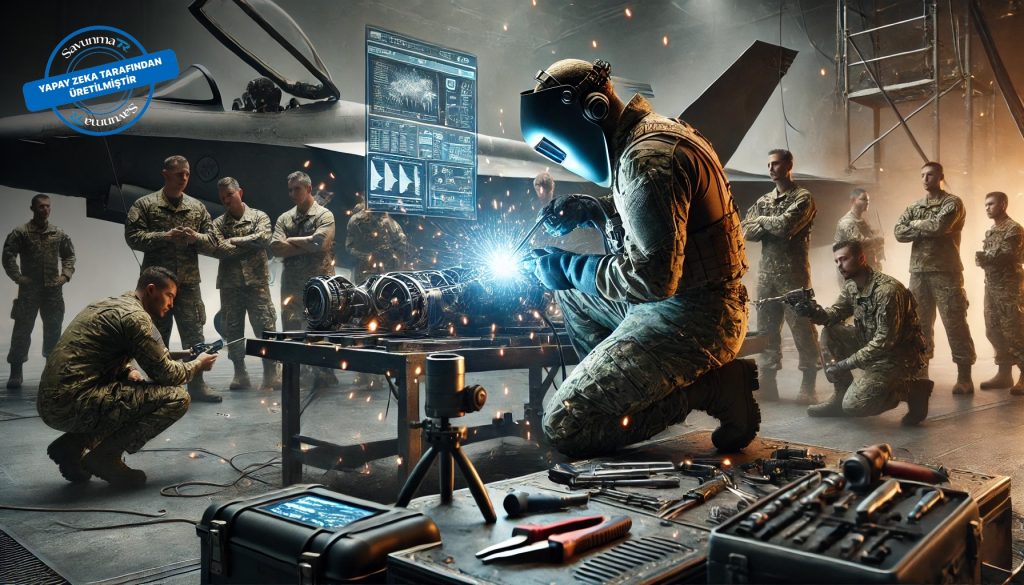
In this process, having a broader level of data scanning is critically dependent on the presence of equipment equipped with IoT sensors. IoT sensors, which form the foundation of real-time data collection capability, enhance situational awareness on the ground.
The use of data-driven instruments, which has become the new norm in warfare today, is at an unprecedented level. It has reached a point where, aside from the harsh realities of war, it is not an exaggeration to say that the world has transformed into a laboratory for testing and applying many methods previously unexperienced.
The ongoing conflict between Russia and Ukraine, particularly the conditions that have developed since Russia’s invasion of Ukraine on February 24, 2022, is a crucial example for understanding modern combat environments.
In this war, highly comprehensive solutions have been employed to access, integrate, and analyze all critical data. At this stage, technologies previously unused or only marginally used in warfare are now integral elements of this conflict.
Ukraine, which is at a disadvantage compared to Russia in terms of conventional military capabilities, is attempting to mitigate this disadvantage largely with next-generation products provided by Western companies. This paper examines the foundations and applications of data-driven warfare in the context of the Russia-Ukraine War.
Instruments of Data-Driven Warfare: Examples from the Russia-Ukraine War
Intelligence and Surveillance
1.a. Commercial Satellite Imagery and Analysis:
Ukraine has accessed high-resolution satellite images through partnerships with commercial satellite companies. According to open sources, companies like Maxar Technologies and Planet Labs have provided Ukraine with real-time satellite data, enabling the military to monitor troop movements and perform target detection. The images obtained from this data have played a critical role in identifying the locations of Russian troops around Kyiv.
Figure 1: Military Convoy in Kyiv Captured via Maxar on February 28, 2022
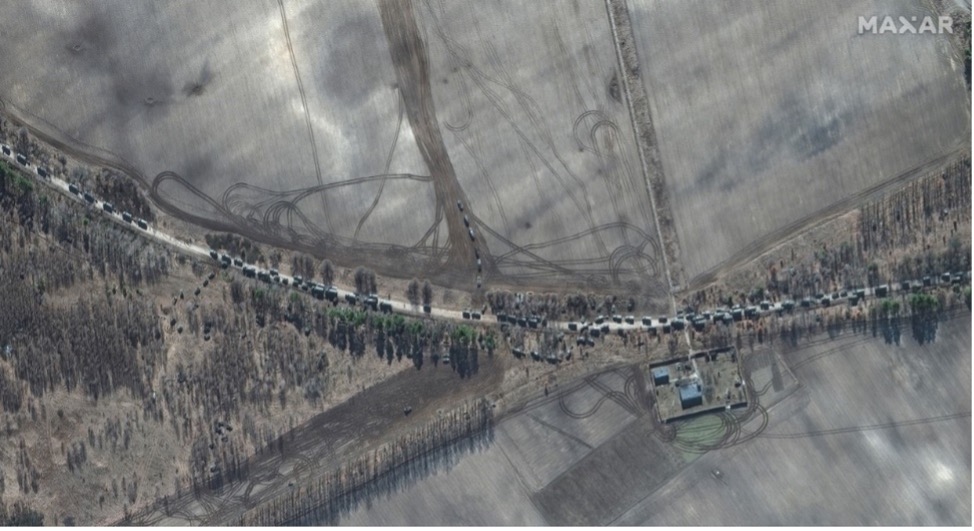
Source: “New Documentary on Ukraine Underscores the Importance of Maxar’s Commercial Satellite Imagery and Capabilities”, https://blog.maxar.com/earth-intelligence/2023/new-documentary-on-ukraine-underscores-the-importance-of-maxars-commercial-satellite-imagery-and-capabilities (Erişim Tarihi: 20.06.2024).
(1.b.) AI-Powered Image Analysis:
It is reported that Ukraine, utilizing AI-based image analysis systems from companies such as Orbital Insight and Descartes Labs, has been able to analyze satellite data quickly and efficiently. It is not difficult to infer that these systems have been used for the automatic detection and classification of potential targets. These technologies are said to have played a significant role in distinguishing between civilian and military targets during the conflicts in Mariupol, Ukraine.
Image 2: This image, showing human movement in Kyiv on February 23, 2023, was created through Orbital Insight.
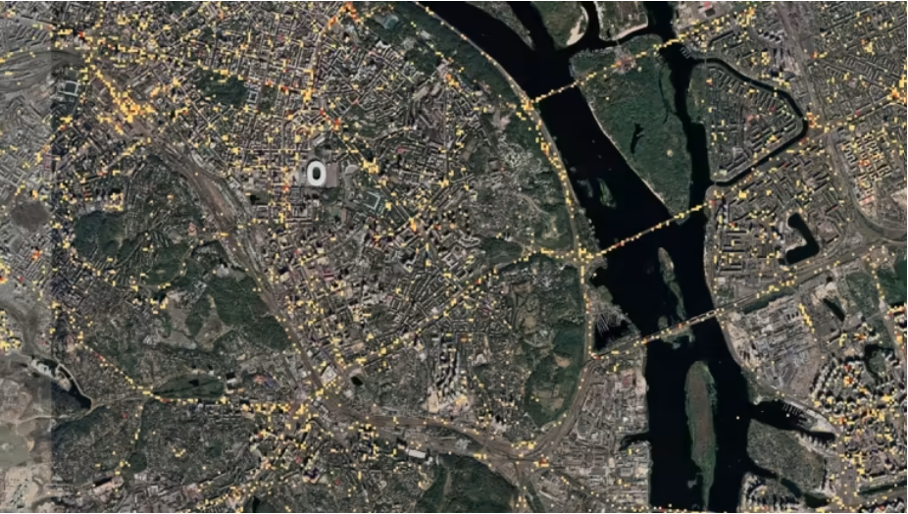
Source: “Satellite Images Reveal how Russia’s Ukraine Invasion Unfolded”, https://asia.nikkei.com/Politics/Ukraine-war/Satellite-images-reveal-how-Russia-s-Ukraine-invasion-unfolded (Accessed at: 20.06.2024).
ELINT and SIGINT Systems
Electronic Intelligence (ELINT) and Signal Intelligence (SIGINT) systems are essential for Ukraine’s monitoring of Russian military communications and radar signals. Systems such as the AN/ALQ-217 Electronic Support Measurement (ESM) system developed by Lockheed Martin and the AN/ALR-69A Radar Warning Receiver by Raytheon have been used to detect enemy communications and radar signals, providing Ukraine with strategic advantages. Some leaked reports suggest that these technologies have been employed to identify and neutralize Russia’s radar and communication systems.
(2.a.) AN/ALQ-217 Electronic Support Measurement (ESM) System:
The AN/ALQ-217, developed by Lockheed Martin, is a system that passively detects radar signals. It is used to identify the locations and operating modes of radar signals across a wide frequency range. By using this system, Ukraine has been able to detect the locations and characteristics of Russia’s air defense radars, allowing it to develop appropriate countermeasures to neutralize these radar systems. The AN/ALQ-217 is reported to have played a critical role in Ukraine’s air operations and the secure operation of Unmanned Aerial Vehicles (UAVs).
(2.b.) AN/ALR-69A Radar Warning Receiver:
The AN/ALR-69A, developed by Raytheon, is an advanced radar warning receiver system. This system detects radar signals from adversary elements, providing pilots with warnings and quickly identifying radar-based threats.
It is claimed that Ukraine has used this system to analyze signals emitted by Russian radars and target these radars to gain operational advantages. The system is reported to have made significant contributions to reducing the effectiveness of air defense elements and maintaining air superiority.
(2.c.) Crypto Decoders and Radio Listening Systems:
Ukraine is known to have used crypto decoders and advanced radio listening devices to enhance its ELINT and SIGINT capabilities. These systems are employed to decrypt encrypted Russian military communications and obtain critical intelligence information. For example, Harris Corporation’s RF-300 series radio receivers are believed to have been used to monitor and analyze a wide frequency spectrum of Russian communications. This allows Ukraine to obtain valuable information to shape its military strategies.
(2.d.) Ground-Based Listening Stations:
Ukraine has established ground-based listening stations in strategic areas to monitor Russian military movements. These stations are used to scan a wide frequency spectrum to detect enemy communications and electronic signals. Based on this information, Ukraine is able to provide real-time intelligence to its forces in the field, enhancing operational effectiveness. For instance, listening stations set up near Kyiv have monitored Russian military communications to detect some attack plans in advance, allowing for countermeasures to be taken accordingly.
(2.e.) HARM Missiles and Electronic Warfare (EW) Aircraft:
Ukraine utilizes U.S.-made AGM-88 HARM (High-speed Anti-Radiation Missile) missiles to target and neutralize Russian radar systems. These missiles are designed to seek out and destroy radar signals from enemy systems.
Figure 3. An Image of an AGM-88 HARM in the Region
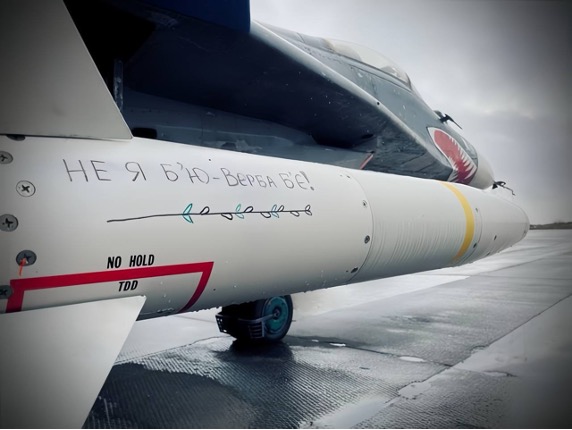
Ukraine’s Field Capabilities
Ukraine’s field capabilities also include electronic warfare aircraft equipped with powerful electronic jamming systems designed to neutralize adversary radar and communication systems. In this context, Ukraine has conducted operations to disrupt Russian communication and radar systems using electronic warfare aircraft (e.g., EA-18G Growler).
Social Media and Open Source Intelligence (OSINT)
(3.a.) Social Media Monitoring:
Leveraging Western technologies, Ukraine has utilized data collected from social media platforms to monitor Russian military movements and assess public morale. According to publicly available information, Ukraine employs social media analysis tools such as Hootsuite and Sprout Social to analyze public sentiment and information flow.
Given Russia’s extensive use of disinformation campaigns throughout the conflict, the use of such tools has proven to be a highly strategic approach.
(3.b.) Crowdsourced Intelligence:
Ukraine has widely employed crowdsourcing methods to gather information and imagery from the public. Platforms like Ushahidi have been reported to facilitate the rapid collection of information about frontline events and enemy movements.
This example further demonstrates that the use of mobile phone images and location data shared by the public to determine enemy positions has become an indispensable practice in both symmetric and asymmetric warfare.
Autonomous and Semi-Autonomous Platforms
(4.a.) Bayraktar TB2 Drones:
Ukraine has gained significant advantages on the battlefield by utilizing Turkish-made Bayraktar TB2 drones. Equipped with artificial intelligence-based target recognition and attack capabilities, these Turkish drones have become a key asset for conducting effective operations through real-time data analysis. Consequently, the effectiveness of Turkish drones in attacks on Russian convoys near Kyiv has drawn international attention.
Figure 4: Bayraktar TB2 Drones in Ukraine

(4.b.) Semi-Autonomous Ground Vehicles:
Ukraine has also employed semi-autonomous ground vehicles on the battlefield. Publicly available information indicates that vehicles like Robo-Team’s Probot and Milrem Robotics’ THeMIS are remotely operated and use artificial intelligence algorithms to navigate obstacles and reach their targets. It is certain that these systems are used to reduce human casualties and enhance operational effectiveness.
Figure 5: Milrem Robotics’ UGVs Deployed in Ukraine
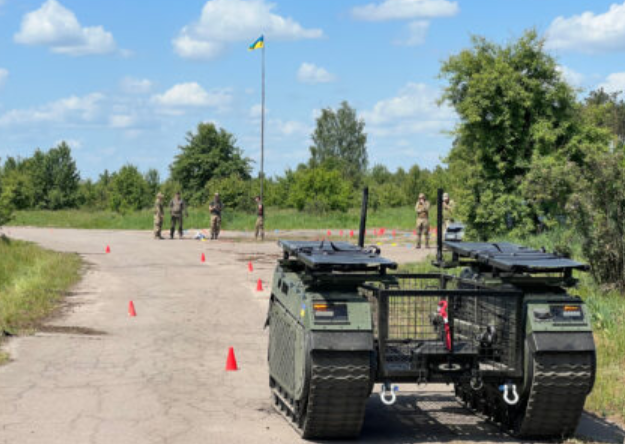
Source: “Ukrainian Forces are Taking Full Advantage of Their THeMIS UGVs”,
https://milremrobotics.com/ukrainian-forces-are-taking-full-advantage-of-their-themis-ugvs/ (Accessed at: 20.06.2024).
Artificial Intelligence-Enhanced Cybersecurity
Ukraine has utilized artificial intelligence (AI)-powered cybersecurity solutions to counter Russian cyberattacks. Systems such as Darktrace and CrowdStrike are reported to analyze network traffic to detect anomalous activities and take swift action against attacks. The reports also note the adoption of proactive cybersecurity strategies. Additionally, AI and machine learning-based systems like Cylance and FireEye are said to predict potential cyber threats and implement preventive measures.
According to current information, these systems are highly effective in preventing attacks on critical infrastructure.
Humanitarian Aid and Logistics Management
(6.a.) Logistics Optimization Through Data Analytics:
Publicly available information indicates that Ukraine leverages big data analytics to optimize the distribution of humanitarian aid. Although specific details about the effectiveness and scope of these operations are not available, reports suggest that data analytics companies like Palantir are ensuring that aid materials reach those in need in the fastest and most efficient manner.
(6.b.) Real-Time Monitoring:
In Ukraine, logistics convoys and aid materials are known to be equipped with IoT sensors and GPS tracking systems. Technologies such as Samsara and Geotab are reported to provide real-time tracking of materials and ensure the safe execution of logistics operations.
Drones and Anti-Drone Technologies
(7.a.) Anti-Drone Systems:
Ukraine widely employs advanced anti-drone technologies to neutralize Russian drones. Additionally, it should be noted that Ukraine is also testing emerging, not yet standardized drone and anti-drone technologies that are still in development.
Figure 6: An Anti-Drone System Used by Ukraine
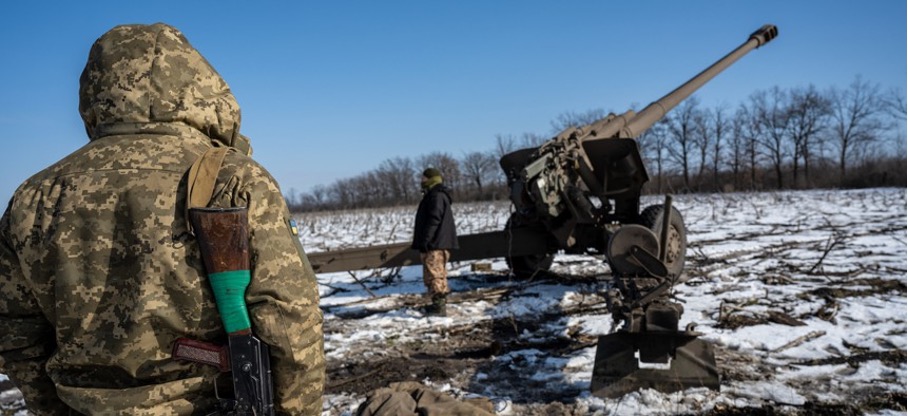
Source: “As Ukraine Braces for Winter Drone Attacks, Allies Rush to Provide Defenses”,
https://www.defenseone.com/threats/2023/11/ukraine-braces-winter-drone-attacks-allies-rush-provide-defenses/391740/ (Accessed at: 20.06.2024).
DroneShield and Dedrone Electronic Warfare Systems:
Reports indicate that electronic warfare systems such as DroneShield and Dedrone, along with laser-based weapons, have been used to detect and neutralize Russian drones. These systems are said to be employed in protecting critical military and civilian infrastructure. However, it is important to note that assessing the true effectiveness and success of anti-drone systems at this stage is challenging.
(7.b.) Swarm Drones:
Swarm drones are frequently reported to be used for coordinated attacks and surveillance operations. Drones developed by companies such as Swarm Technologies and Anduril are said to operate effectively by communicating with each other through artificial intelligence algorithms. These drones are understood to be utilized for surveillance over large areas and for rapid response.
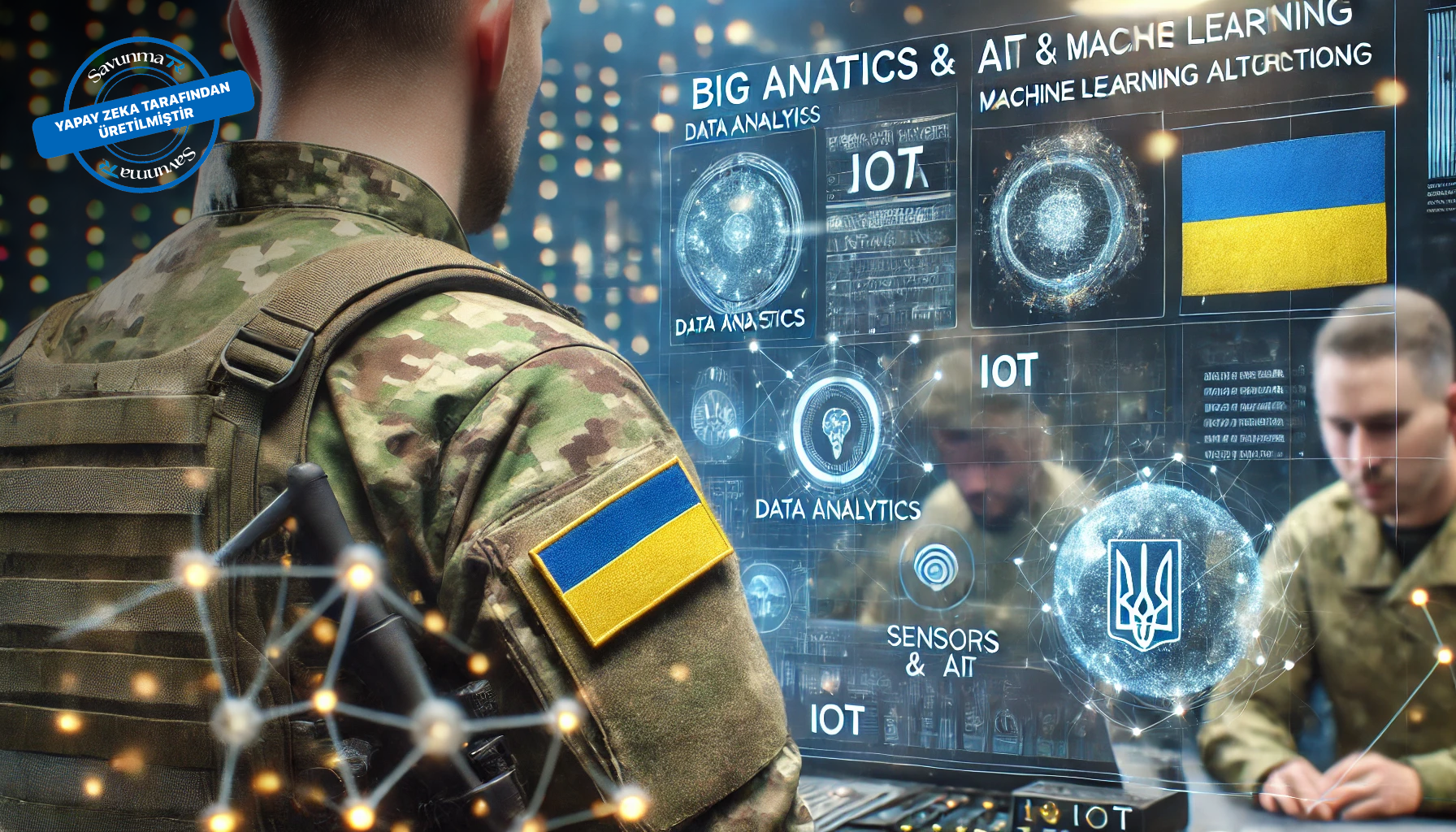
Conclusion
The war in Ukraine provides unique examples of how data-driven technologies and innovative strategies can be utilized on the battlefield. Practices in areas such as commercial satellite imagery, social media intelligence, autonomous systems, ELINT/SIGINT solutions, anti-drone applications, cybersecurity solutions, and humanitarian aid and logistics management are causing profound changes in the dynamics of modern warfare.
Given Ukraine’s new-generation military capabilities, criticisms suggesting that it has not achieved sufficient strength against Russia seem unjustified. The process has resulted in Ukraine, which was conventionally far behind Russia, transforming the war into a data-driven conflict and enhancing its resistance against Russia.
In the future, it is inevitable that these technologies and methods will be further developed to create even greater impacts both in global defense industries and operational doctrines.
It should be noted that if war is not inevitable, it is nothing more than a series of murders. A world without war has never existed in the past and remains a utopia in today’s reality. Nevertheless, I wholeheartedly wish that enduring peace one day becomes seen and embraced as the “ideal of humanity.” However, I believe that it is unacceptable to be unprepared and wait like “sacrificial sheep” with empty romanticism like “no to war.”
Regardless of how the challenging dynamics of the Russia-Ukraine war conclude, the continuous war experiences occurring on Ukrainian soil offer valuable lessons for other countries and demonstrate that data-driven warfare will become a primary element rather than a supporting factor in the years to come.
Source: Veriye Dayalı Savaş Laboratuvarı: Rusya-Ukrayna Savaşından Öğrendiklerimiz – SavunmaTR
